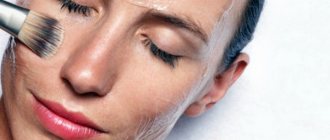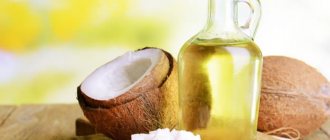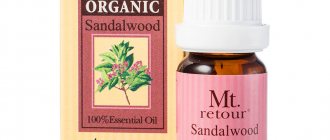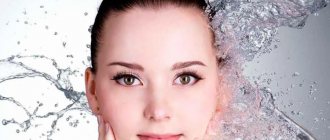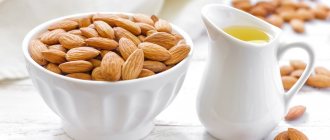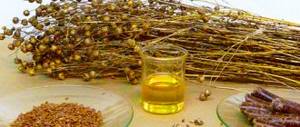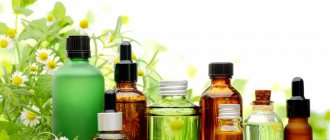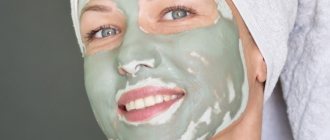Shea butter (Shea butter) beneficial properties
Shea butter is a vegetable oil that has gained popularity among our women relatively recently. It has many beneficial properties that support the youth and beauty of a woman; used to treat certain skin diseases:
- Saturates the skin with nutrients and vitamins, improves local immunity.
- Moisturizes it, fatty acids retain moisture and prevent drying and dehydration of the skin.
- The healing effect promotes the rapid restoration of small wounds, abrasions, scratches, and quickly relieves an allergic reaction from insect bites.
- The protective property is expressed in the creation of a protective film on the surface, which protects against harmful environmental factors (exposure to ultraviolet rays, strong wind and frost).
- Promotes rapid cell regeneration by accelerating metabolic processes.
- Smoothes wrinkles by filling the dermis with moisture, makes the skin soft, elastic, and tightens the oval of the face.
- Relieves inflammation of various origins, including acne.
- With regular use, it eliminates age spots, whitens the skin and makes the tone more even.
Useful properties of shea butter.
The most important property of shea butter is its ability to soften rough skin, which is why fatty universal creams containing this oil are often recommended to be applied only to certain areas that require special care - knees, feet, elbows.
On sale you can also find face creams containing shea butter. These products are recommended for aging skin that has lost its elasticity. By influencing the synthesis of collagen and elastin, such creams can significantly rejuvenate and refresh the face, and resist the appearance of the first small expression wrinkles. Many people also note that regular use of this cream improves skin color and helps in the fight against stretch marks and other defects.
It is important to note the protective properties of shea butter. This natural remedy protects the skin from ultraviolet radiation and prevents photoaging.
On our website you will always find solid oils, including shea butter!
Benefits of shea butter
With the help of oil you can solve some difficulties and skin problems. The oily base and properties of the oil are well suited for dry, problematic, aging, flabby and dehydrated skin. In cosmetology, it is most often used by women over 35 years old.
Possessing good moisturizing properties, it eliminates flaking and dry skin. This property is used for those with dry skin at any age.
It is well suited for the care of delicate eyelids, for the care and protection of lips.
It has found its application for the care and removal of diaper rash in newborns.
It is used in the complex treatment of certain pathologies (psoriasis, dermatitis, rheumatism, sprains, etc.).
Daily use of shea butter gives your skin:
- protection from harmful environmental factors;
- nutrition and softening;
- antibacterial protection;
- faster regeneration of the skin in case of damage;
- smoothing out wrinkles;
- improvement and evenness of skin tone;
- hydration;
- increased tone and elasticity;
- removal of peeling;
- soothes chapped skin;
- rejuvenates;
- prevention of problem skin rashes.
Shea butter: application
The main uses of Shea butter are:
- food industry - as a natural substitute for cocoa butter in the production of chocolate, and as an emulsifier in the production of margarine and confectionery;
- production of cosmetics - as an active ingredient in moisturizing, caring and rejuvenating products for the face, body and hair;
- medicine - as an anti-inflammatory and mild pain reliever.
Harm of shea butter
Despite the many beneficial properties, shea butter can cause an allergic reaction. Use with caution for those who are allergic to nuts.
Before use, do a test on the bend of your elbow joint. Apply a small amount of oil and leave for 20 minutes. If, after a period of time, no irritation, redness, itching or swelling appears in this area, this means that there is no allergy to this product and it can be used.
You should not use etherol for acne.
Do not use oil that has been improperly stored, exposed to direct sunlight or stored in heat. It becomes unsafe for health and may be carcinogenic.
Shea (Shea) butter
The presence of shea butter (shea butter) in cosmetics is indicated by the inscription Butyrospermum parkii (Shea Butter) . When purchasing cosmetics with shea butter, you must make sure that it is mentioned one of the first in the list of ingredients, otherwise the cosmetic product will not have the expected effect.
Shea butter (Shea) in cosmetics 34123
To reduce the cost of cosmetics, a mixture of shea butter with coconut or palm oil, or tallow tree oil (Sapium sebiferum), or shea butter of Indian origin (Bassia djava) is often used. When purchasing cosmetics with shea butter, carefully read the ingredients to avoid disappointment.
Properties of shea butter used in cosmetics:
Rejuvenating . Shea butter has strong regenerating properties, activates collagen synthesis and restores skin elasticity.
Moisturizing . Shea butter is quickly absorbed and strengthens the barrier properties of the skin, protecting it from moisture loss.
Smoothing . Shea butter deeply softens the skin, reduces the depth of wrinkles, relieves the feeling of skin tightness, and prevents the appearance of stretch marks in pregnant women.
Anti-inflammatory . Shea butter eliminates irritation and flaking on the skin, treats acne, burns, reduces scars.
Regulatory . Shea butter regulates fluid content in the body, eliminates swelling, bruises and wrinkles in the area around the eyes.
Restorative . Shea butter restores the keratin layer of cells, giving firmness and elasticity to nails and hair.
Protective . Unsaponifiable fats, which are part of shea butter, are natural UV filters and protect the skin from the harmful effects of sunlight.
Strengthening . Shea butter strengthens, nourishes and moisturizes hair, gives it shine.
For medicinal purposes, shea is used to rub painful muscles and inflamed joints, as the oil relieves pain, eliminates bruises and swelling. For severely cracked skin on the hands or heels, as well as on the breast nipples in nursing women, shea butter softens the skin and heals cracks.
Shea butter protects the skin from frostbite and chapping, and relieves itching from insect bites.
Cosmetics containing shea butter should be stored at room temperature in tightly closed containers, preferably made of dark glass, away from direct sunlight. The shelf life of cosmetics with shea butter is no more than 2 years.
In what cosmetics is shea butter found?
- emulsion against swelling and bruises under the eyes
- moisturizing face cream
- moisturizing body milk
- nourishing face masks
- tanning oil
- after sun body milk
- softening cream for rough elbows and heels
- lotion for sensitive and problem skin
- lip balm
- cream for dry and aging skin
- Massage Oil
- anti-cellulite cream
- aftershave lotion for sensitive skin
- masks for strengthening and nourishing hair
- cosmetics for moisturizing and nourishing facial skin with Shea butter
The presence of shea butter (shea butter) in cosmetics is indicated by the inscription Butyrospermum parkii (Shea Butter) 33242
The use of cosmetics with shea butter is undesirable:
- in case of latex allergy, since elements of this substance are contained in the oil itself
- if you are prone to acne, because shea butter is comedogenic.
What is shea butter (Shea butter) used in cosmetology?
Shea butter is an exotic vegetable oil, one of the most popular cosmetic products. This oil, like the plant from which it is extracted, has many names. The fact is that the vitellaria tree (Vitellaria Paradoxa), from the fruits of which valuable oil is squeezed, grows only in the region of tropical Africa, and each African nation calls it in its own way: the Senegalese (and after them the French) gave the tree and oil the name “karite” (le karate), the Guineans call it “karedye”, the Sudanese - si, the British, following the Sudanese, call it shea butter tree, and in Russia this tree is known as butyrosperm.
Shea butter is extracted from the fruit of the Vitellaria Paradoxa tree. 33467
The vitellaria oil tree begins to produce a fairly significant harvest (about 20 kg per plant) only at the age of 50 and bears fruit once every 2-3 years until approximately 100 years of age. The fruits resemble small avocados, quite nutritious and tasty, but the most valuable thing about them is the nut-like seed from which the oil is extracted.
In countries where the vitellaria oil tree grows, a ban on its felling has been introduced under pain of criminal penalties, since the export of shea butter provides up to 30% of the budget revenues of these African states. As a rule, women are engaged in collecting fruits, squeezing and selling shea butter.
Archaeologists claim that during excavations of Neolithic monuments in many African countries, stone tools for preparing shea butter are found, and Egyptian manuscripts indicate that caravans delivered valuable oil to Cleopatra in clay jugs. Europe became acquainted with shea butter only in the mid-19th century thanks to the London Industrial Exhibition, at which samples of this oil were first presented for the needs of the pharmaceutical and food industries. The first experiments on the use of shea butter for skin care began only in the 1930-50s, but they began to actively use it as a basis for high-quality cosmetics only in the 1980s.
Where does shea butter come from for cosmetics?
The collected shea fruits are placed in clay vessels or pits for fermentation; after a few days, the seeds are easily separated from the pulp and dried in the sun; in this form they can be stored for several months, and they are handed over to resellers or used for personal needs.
Local residents, like hundreds of years ago, heat shea seeds in cauldrons, then crush and grind them on stones with a wooden rolling pin, the resulting pulp is boiled in a cauldron with water until a layer of oil floats to the surface, which is collected and formed into bars like butter. The oil is very plastic, fluid even at a temperature of 35 degrees, has a green color and a slight nutty smell, and can be stored for up to 2 years without going rancid.
On an industrial scale, shea butter is obtained by hot pressing of seeds or extraction with solvents (for example, hexane). Unrefined oil is yellowish-cream in color, while refined oil is almost white because it is further steamed, filtered, bleached and deodorized. It has a sweetish taste and a barely noticeable aroma. The extracted oil is pale brown, with a faint pleasant odor.
How to select and store at home
You can buy high-quality oil at a pharmacy or a specialized store selling natural cosmetics and handmade soap.
It resembles ghee with a dense consistency, melts at body temperature and has a pleasant nutty aroma.
It ranges in color from white to light brown.
According to the method of production, they are divided into two types:
- unrefined - obtained by cold pressing with pre-heating of the seeds;
- extracted - obtained by extraction from solution.
They are divided into several types according to the degree of purification, but types A and B are commercially available.
Type A includes unrefined oil with a light yellow to light beige hue and a specific nutty aroma.
Type B includes deodorized oil obtained by processing with hot steam with a shade from white to light yellow, odorless.
Knowing what good quality oil should look like, you need to choose it depending on the purpose.
At home, it should be stored in a cool place, avoiding direct sunlight, preferably in a glass container.
Shea butter uses
Etherol can be used independently or as part of a composition. The properties of shea butter are used for care and restoration in cosmetology and medicine.
It is applied for:
- faces;
- lips;
- arms and legs;
- bodies;
- hair.
Shea butter for the face is used for wrinkles, for moisturizing, nourishing, and preventing the appearance of pimples and acne.
Those with oily skin types should not overuse shea butter. Do not use it in its pure form in the summer, during the rest of the period - no more than a month.
The application is especially important for lips. It moisturizes, nourishes and protects against chapping, severe frost and exposure to sunlight.
It softens and moisturizes the skin of the hands and feet. Nourishes and strengthens nails, they stop peeling. The oil protects your hands very well during bad weather.
For the body it is often used for massage. The skin becomes elastic, moisturized, inflammation is eliminated.
For hair, it is added to masks to make it smooth and silky.
During pregnancy
Pregnant women use it in its pure form and with the addition of essential oils to prevent and eliminate stretch marks in the abdomen, chest and thighs.
For children
Shea butter can be used for children from the first days of life in the absence of allergic reactions to eliminate diaper rash and irritation on the baby’s delicate skin. The oil is applied in a thin layer with light massage movements. Apply until complete recovery within several weeks.
Can be added to products applied under a diaper to soften and relieve irritation on the baby's skin.
Joint diseases
Considered effective for arthritis and rheumatism. When rubbed into a sore joint, it penetrates deeply, has an anti-inflammatory effect, relieves swelling and pain.
For sprains
Shea butter, penetrating deeply, has a warming effect in the deep layers of tissue. This action is used for muscle and tendon sprains, as well as for increased muscle tone and muscle strain.
For dermatitis and psoriasis
The product is applied in its pure form twice a day for at least 10 days. It reduces pain, promotes better healing and restoration of the skin.
To enhance the therapeutic effect, essential oils are added to it: lavender, patchouli and others.
For hemorrhoids
For faster healing of cracks in the anal area, relieving swelling and strengthening the venous walls, shea butter is used in addition to the main treatment. It is heated in a water bath and applied using a tampon.
Functions of Shea butter
In cosmetics and personal care products, shea butter primarily acts as an emollient, but it also has some anti-aging properties.
Shea butter is an emollient that softens and soothes the skin. Because shea butter melts at body temperature, it has the ability to coat the skin and form an occlusive film. This film helps prevent the skin's natural moisture from evaporating and increases skin hydration by causing water to accumulate in the stratum corneum (the topmost layer of skin).
In fact, shea butter's properties are superior to those of mineral oil in preventing transepidermal water loss (TEWL). A study was conducted where participants washed their hands in water containing ethanol and then studied how shea butter repaired the skin compared to mineral oil. Within two hours, the researchers found that shea butter was able to help the skin fully recover from transepidermal water loss. After three to four hours, shea butter was found to improve the skin barrier. When using mineral oil, there was a slower recovery.
Another study published in the journal Allergy and Clinical Immunology compared the effects of shea butter with petroleum jelly for the treatment of eczema. Using a scale of zero to five (zero signifies mild and five signifies very severe illness), shea butter took three to one, while petroleum jelly only took three to two. Thus, the study found that shea butter acts as an effective emollient for eczema.
The rich supply of triglycerides and fatty acids in shea butter helps restore the skin's natural barrier function. The stratum corneum is made up of corneocytes (dead skin cells) held together by a lipid barrier. In addition to fatty acids, the barrier consists of ceramides and cholesterol. Deficiencies in these essential lipids can result in a weakened or damaged skin barrier, which can subsequently allow harmful substances such as allergens, bacteria, and irritants to enter through the skin. This leads to symptoms of dryness, itching and irritation, and can lead to the development of skin conditions such as acne, eczema and even signs of aging. Using ingredients that replenish the skin barrier, such as shea butter, can help prevent these problems.
In addition to its moisturizing properties, shea butter can improve the appearance of aging skin due to the presence of unsaponifiable components. A study published in the journal Phytotherapy Research found that unsaponifiable fractions of avocado and soybean oil stimulate the synthesis of collagen and elastin fibers, which reverses the degenerative changes of skin observed with aging. Thus, the unsaponifiable components of shea butter can stimulate collagen synthesis, resulting in a more youthful complexion.
Recipes for the face
For dry skin
Take 1⁄2 ripe banana and mash it to a puree consistency. Add one teaspoon each of honey, jojoba and shea butter. Mix until smooth, apply for 15-20 minutes.
For sensitive skin
Grate the lemon zest onto a fine grater. Take 1 tsp. zest, add 1 yolk and 1 tsp. walnut and shea butter. Mix to obtain a homogeneous mass. Apply for 15-20 minutes.
For oily skin
Dilute a small amount of white clay to a paste-like consistency, add 1 tsp to it. shea butter and 2 drops of tea tree oil. The mask is applied for 15-20 minutes.
Rejuvenating mask
- Mix 1 tsp. shea butter, calendula, sea buckthorn and almond seed. Apply the mixture before bed for 20 minutes. Remove unabsorbed residues with a cosmetic disc.
- For skin with signs of aging, this mask works well: mix 1 yolk with two teaspoons of shea butter and two teaspoons of olive oil, add 1⁄2 tsp. lemon zest. The mask is applied for 20-25 minutes every evening for a month.
For wrinkles
Grate 20 g of fermented milk cheese, add 2 quail eggs and 3 g of shea butter. Mix until smooth and apply to face for 20 minutes.
This mask improves skin elasticity and helps smooth out wrinkles.
For eyelids
Mix shea butter with almond seed oil in equal parts. Moisten the disc and apply to the eyelids for 15 minutes. After removing, remove any remaining oil with a napkin.
You can use it in a similar way with jojoba oil. This composition will work well to stimulate the production of your own collagen and reduce wrinkles.
If you use shea butter on your eyelids on its own, you need to massage it in carefully so as not to stretch the delicate skin.
If you use shea butter on your eyelids on its own, you need to massage it in carefully so as not to stretch the delicate skin.
There are many recipes for face masks based on shea butter. The main thing is to choose the right one for you.
Hair Recipes
For hair, shea butter is used independently and in complex masks for intensive nutrition.
In its pure form, the oil is applied to damp hair before and after washing, evenly distributed over the entire length.
To intensively nourish and moisturize the hair, prepare the following mask:
- shea butter-40g;
- linseed oil-40 ml;
- burdock oil - 20 ml;
- vitamin E-1 tbsp;
- vitamin A-1 tbsp.
The ingredients are mixed, applied to the roots of the hair, then distributed along the entire length, and wrapped. Leave for 3-4 hours.

